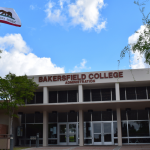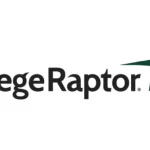In the last several decades, the higher education space has become awash with data. Sometimes this data can be a source of stress, as leaders find themselves overwhelmed with data but lacking in meaningful insights around what to do differently to drive meaningful change. Human-centered AI presents a new opportunity in the face of this old challenge: it expands our capacity to understand and treat our students as unique, multifaceted individuals, rather than monolithic student tropes.
The State of Personalized Student Experiences in Higher Education
How we treat students (and by extension, how they experience their interactions with our institutions) plays a huge role in their initial and ongoing decisions about enrollment. In the last couple of decades, we’ve come closer – as an industry – to understanding that we need to acknowledge the various nuances within our student body, but the depth of our ability to personalize our interactions with students has been majorly restricted by our institutional capacity. It’s not realistic to expect a marketing office, or a communications office in enrollment services to send individual emails to each student based on their unique goals, identities, and needs. Instead, we’ve been focused on “scale” and “replicability”, which has gotten us closer to our goals, but we still repeatedly miss the mark.
Today’s students are consumers that have come to expect hyper-personalized interactions. Consider the personalized recommendations that Netflix, Amazon, and Spotify regularly offer our current and prospective students. Meanwhile, most higher education institutions lack the basic ability to meaningfully personalize their interactions without significant legwork.
Areas of Opportunity for Hyper-Personalization
As we plan to leverage human-centered AI in many areas of higher education, thinking about how we can apply it to meet our students’ expectations of hyper-personalization is a no-brainer. Across a student’s’ journey, there are key moments where a student must make decisions about their future: these are the most obvious opportunities for hyper-personalization.
- ENROLLMENT: We know that clear, simplified, personal, and consistent support from the moment of interaction with the institution is crucial to convert admitted students into enrolled students.
- PERSISTENCE: We know that once students are enrolled, we need them to select a path toward their goal and then bolster that experience with seamless, persistent support to help them persist.
- INTERVENTIONS: We know that we must be prepared to intervene when students fall off their path or experience an external life event that might cause them to deviate from their initial goals.
Unfortunately, even the best predictive models – to date – have struggled to pinpoint the exact moment in which a student needs interventions or tailored support, making some of our efforts to intervene less effective. Still, we’ve tried to infuse support around key moments through practices like guided pathways, and we’ve even added important layers to these pathways to account for students with various needs like disability services, or first-generation status. Even so, these pathways are still not enough to ensure that all students receive the right support at the right time. This is made more challenging because even subgroups of students are not uniform: identities of students are multi-dimensional.
How Human-Centered AI Can Meet Individual Student Needs
Fortunately, technological innovations like Human-Centered AI are reshaping our future as we think about how we can provide tailored support to students in the exact moment they need it (even if offices are closed!). The table below illustrates how differently we can approach supporting our students if we leverage HCAI technology (safely) to hyper-personalize the experience.
| Scaled Approach to Student Support | Hyper-Personalized Approach to Student Support |
Orientation Handouts (printed, included in materials provided at orientation)
|
Personalized orientation: a composite of all of the specific interests and needs based on that student’s’ data
|
Institutional FAQ Page:
|
HCAI Chatbot:
|
For a long time, we have aimed to create (or believed that we had) a “single front door” to our institutions, but this is a myth. Our students come into our institutions through many front doors, based on their needs, goals, identities, and experiences. One might argue that we created this myth to help us reconcile with the fact that we didn’t have the resources to create a consistent, personalized experience across all our institutional front doors. But, by using HCAI to hyper-personalize the student experience, we can increase a sense of belonging, enrollment, retention, completion, and satisfaction (among other things). It’s time we seized that opportunity and ran with it.















